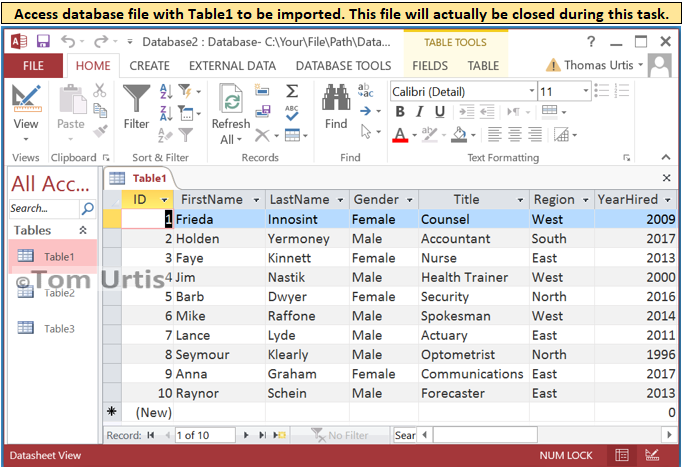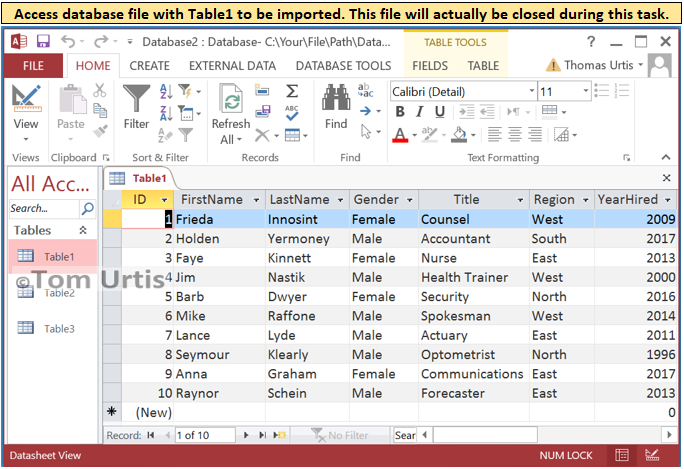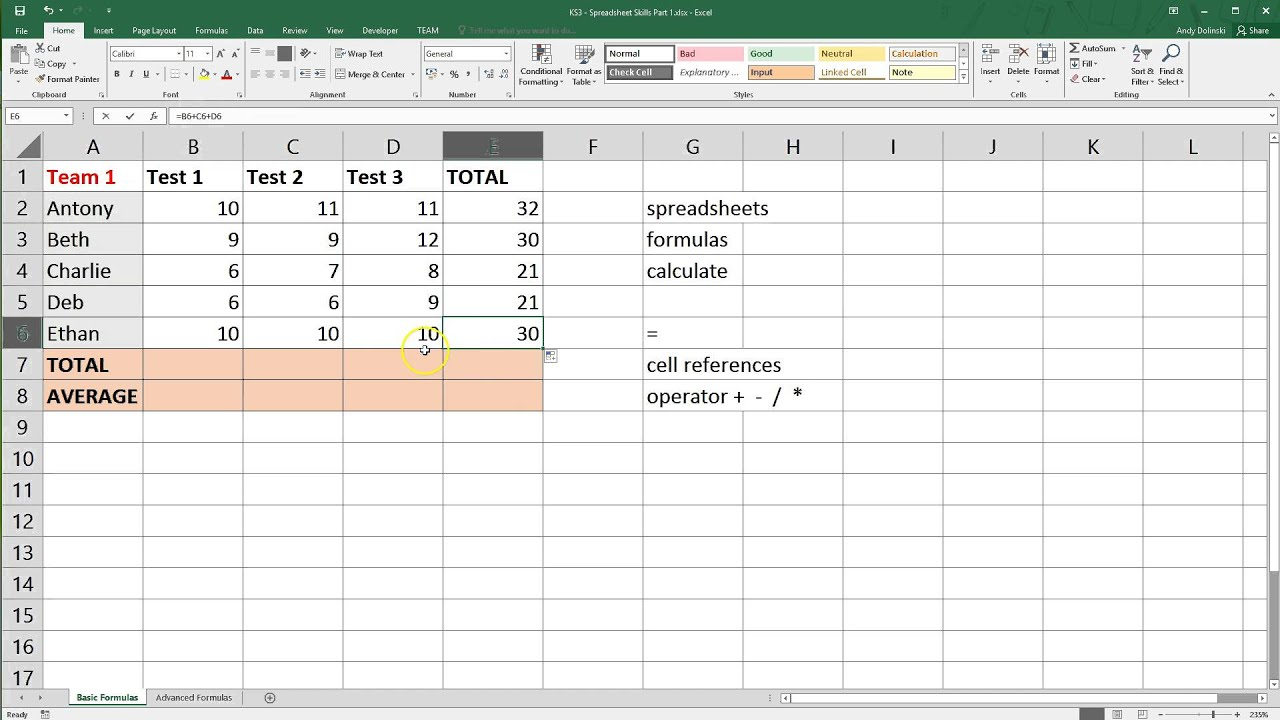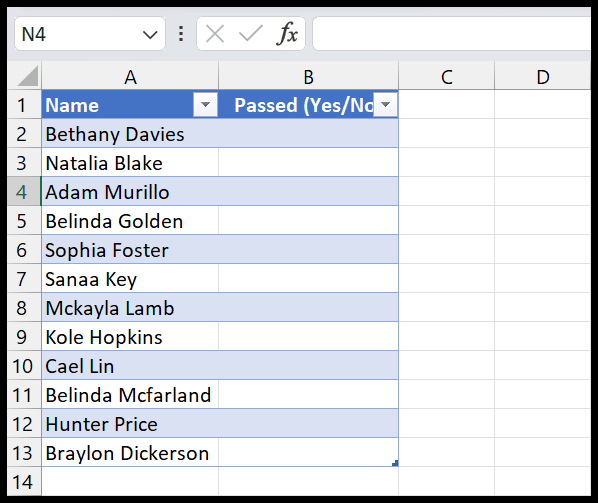10 Excel Database Tutorials: Ultimate Guide

Introduction to Excel Database Tutorials

Microsoft Excel is a powerful tool used for managing and analyzing data. With its ability to handle large datasets, create complex formulas, and visualize data through charts and graphs, it has become an essential skill for anyone working with data. In this article, we will explore the 10 Excel Database Tutorials: Ultimate Guide to help you master the art of working with databases in Excel.
Understanding Excel Databases

An Excel database is a collection of related data stored in a single worksheet or multiple worksheets. It allows you to store, manage, and analyze large datasets efficiently. To create an Excel database, you need to understand the basics of Excel, such as data types, data validation, and data manipulation. In this tutorial, we will cover the fundamentals of creating and managing an Excel database.
Tutorial 1: Creating an Excel Database

To create an Excel database, follow these steps:
- Open a new Excel workbook and create a new worksheet.
- Define the structure of your database by creating columns and rows.
- Use data validation to ensure data consistency and accuracy.
- Use data manipulation techniques, such as filtering and sorting, to manage your data.
Tutorial 2: Managing Data in an Excel Database

Once you have created your Excel database, you need to manage the data effectively. This includes:
- Data entry: Entering data into your database.
- Data editing: Modifying existing data in your database.
- Data deletion: Deleting unnecessary data from your database.
Tutorial 3: Using Formulas and Functions in an Excel Database

Formulas and functions are essential in an Excel database, as they allow you to perform calculations and manipulate data. In this tutorial, we will cover:
- Basic arithmetic formulas: Using formulas to perform basic arithmetic operations.
- Statistical functions: Using functions to perform statistical analysis.
- Lookup functions: Using functions to look up data in your database.
Tutorial 4: Creating Charts and Graphs in an Excel Database

Visualizing data is an essential part of working with an Excel database. In this tutorial, we will cover:
- Creating charts: Using charts to visualize data.
- Creating graphs: Using graphs to visualize data.
- Customizing charts and graphs: Modifying charts and graphs to suit your needs.
Tutorial 5: Using PivotTables in an Excel Database

PivotTables are a powerful tool in Excel that allow you to summarize and analyze large datasets. In this tutorial, we will cover:
- Creating a PivotTable: Using PivotTables to summarize data.
- Customizing a PivotTable: Modifying a PivotTable to suit your needs.
- Using PivotTable fields: Using fields to filter and analyze data.
Tutorial 6: Using Macros in an Excel Database

Macros are a powerful tool in Excel that allow you to automate repetitive tasks. In this tutorial, we will cover:
- Creating a macro: Using macros to automate tasks.
- Running a macro: Executing a macro to perform a task.
- Editing a macro: Modifying a macro to suit your needs.
Tutorial 7: Using Excel Database Functions

Excel database functions are used to perform various operations on data, such as filtering, sorting, and summarizing. In this tutorial, we will cover:
- Using the FILTER function: Using the FILTER function to filter data.
- Using the SORT function: Using the SORT function to sort data.
- Using the SUMMARIZE function: Using the SUMMARIZE function to summarize data.
Tutorial 8: Using Excel Database Tools
Excel provides various tools to help you manage and analyze your data, such as the Data Analysis tool and the Query Editor. In this tutorial, we will cover:
- Using the Data Analysis tool: Using the Data Analysis tool to analyze data.
- Using the Query Editor: Using the Query Editor to create and edit queries.
Tutorial 9: Creating a Database from Scratch
In this tutorial, we will create a database from scratch using Excel. We will cover:
- Defining the database structure: Creating columns and rows to store data.
- Entering data: Entering data into the database.
- Managing data: Using data manipulation techniques to manage the data.
Tutorial 10: Advanced Excel Database Techniques
In this tutorial, we will cover advanced techniques for working with Excel databases, such as:
- Using advanced formulas and functions: Using advanced formulas and functions to perform complex calculations.
- Using macros to automate tasks: Using macros to automate repetitive tasks.
- Using Excel add-ins: Using Excel add-ins to extend the functionality of Excel.
📝 Note: These tutorials are designed to be a comprehensive guide to working with Excel databases. However, it is essential to practice and apply the skills learned in these tutorials to become proficient in using Excel databases.
What is an Excel database?

+
An Excel database is a collection of related data stored in a single worksheet or multiple worksheets.
How do I create an Excel database?

+
To create an Excel database, follow the steps outlined in Tutorial 1: Creating an Excel Database.
What are some advanced techniques for working with Excel databases?

+
Some advanced techniques for working with Excel databases include using advanced formulas and functions, using macros to automate tasks, and using Excel add-ins to extend the functionality of Excel.
In summary, mastering the art of working with Excel databases requires practice and dedication. By following the 10 Excel Database Tutorials: Ultimate Guide, you can gain the skills and knowledge needed to effectively manage and analyze data in Excel. Remember to practice and apply the skills learned in these tutorials to become proficient in using Excel databases. With time and effort, you can become an expert in working with Excel databases and unlock the full potential of this powerful tool.



